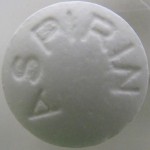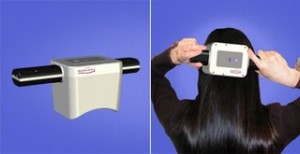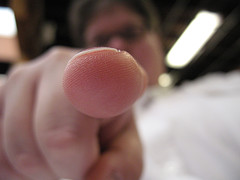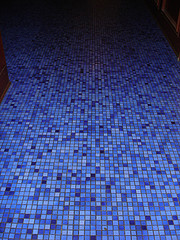 RSS FEED
RSS FEED
Archive for the ‘Medicine’ Category
From the Lake to You – Great Migraine Reading
July 24th, 2008

This is where I am now as I write you. A beautiful lake in the mountains, where I come every year with a group of friends and extended family, and hike, swim, kayak, and rock on rocking chairs on a big porch overlooking the lake. So why am I writing now? For one thing, it’s been pouring much of the week! For another, I spent yesterday in my room with a migraine. A friend posted this link to a Scientific American article on Migraine disease, and I wanted to share it. She called herself a nerd for having a Scientific American subscription; I guess that makes me a real Migraine Geek for choosing this for my vacation reading! But it’s really fascinating!
Here’s the link to the article, which explains and summarizes new research into how migraines actually start in the brain and central nervous system: Why Migraines Strike. It’s a long article, but well worth reading
to better understand what is going on in our brains, and new possibilities for treatment. I think the most important point, made by the authors in the last paragraph, is that the evidence is overwhelming that this is a real, congenital disease, a significant difference in brain function. Wave this article in the face of those who still won’t believe Migraine is a disease! A few points that really struck me:
- There is strong evidence suggesting that the tendency to Migraine is genetic, but there are a number of different genes involved, and the same genes are not involved for every migraineur. This may provide some explanation of the wide variety of symptoms experienced by different migraineurs and the variance in effectiveness of treatments from one person to another.
- The differences between migraine with and without aura may be explained by a phenomenon called cortical spreading depression, an abnormal kind of neuronal activity, which moves across the brain like a storm, affecting visual centers in some, motor centers in others, and perhaps even explaining the irritability, sleepiness and brain-fog experienced by those without aura, as the brain centers involved come under the “storm.” Thus the pro-drome symptoms experienced by those of us without aura may be another kind of aura!
- Triptan drugs, which constrict blood vessels (which is why they are contraindicated for many with heart conditions or high blood pressure), were created when the prevailing theory of the cause of Migraine was vascular. Luckily, they also inhibit the neuronal activity which is the actual culprit! However, the new understandings of Migraine as a neurological condition makes development of newer, more specific abortive drugs possible, and several are under development.
Read the article and let me know what you think. A few of my non-migraineur friends and relations up here even found it interesting. More fodder for helping others – and ourselves – understand!
See you! I’ll be heading out on the lake – as soon as it stops raining!
– Megan
Tags: cortical spreading depression, genetics, migraine aura, Migraine disease, Scientific American, vacation
Posted in Medicine, Science | Comments (2)
Update on my Headache Specialist Visit
July 13th, 2008

If you’ve been wondering, I do think all the preparation I did paid off. I met with my new headache specialist for over an hour on Tuesday, and I liked him. He seems knowledgeable, up on current research, is respectful, takes his time, listens, answers questions.
He took a little over an hour with me. He is starting up the headache center for UMDMJ (University of Medicine & Dentistry of NJ) and RWJ (Robert Wood Johnson) University Hospital. The center has been open
less than a year. Right now he spends half his time with general neurology patients while they build the headache & Migraine practice. He plans to do headache medicine exclusively and wants to have an iv center here eventually. He said about 80% of his HA patients have chronic daily headache or transformed migraine. He is very concerned about preventing chronic pain in someone like me who hasn’t developed it yet.
Some very good news for me – when I talked about an emergency plan, he said to come to the ER at RWJ. They will contact him or the neurologist on call and will have my chart and a protocol for me. It’s about 15 minutes further to this ER as opposed to 20 to my nearest one, but I can cope with that. It’s a huge load off my mind to have an emergency plan.
We talked about preventives – he gave me the choice of starting them now or giving it a few months to see if my current success holds (2 mild migraines last month – see my post on Recent Success). I decided
to wait. He wants me to continue exercising every day, get 8 – 10 hours of sleep per night, and he wants me to add physical therapy for neck-strengthening exercises and get neck massages. If the headaches
increase again I can call him and he will start me on preventives. I will be seeing him again in mid-September. I’m planning to do a lot of reading up on medication options before that time. Other issues – he wants me to get an ENG to test whether my vertigo is positional vertigo or Migraine related (MAV). He thinks from my description it is probably positional and they can correct that in the office. If it’s MAV
triptans could be a problem so I hope I don’t have it. My medication options are so limited already I sure don’t want them limited further!
He would also like me to do a challenge test with aspirin – I’ve talked to my primary physician about doing  that in his office. (For those of you not familiar with my saga, I have a life-threatening allergy to ibuprofen, and that is in the same drug family as aspirin, naprosyn, all the other nsaids.) This is an allergy challenge test – to see if I react to the drug. The
that in his office. (For those of you not familiar with my saga, I have a life-threatening allergy to ibuprofen, and that is in the same drug family as aspirin, naprosyn, all the other nsaids.) This is an allergy challenge test – to see if I react to the drug. The
staff would be standing by to save me if I have a reaction. The idea makes me very nervous. But if I am not allergic to aspirin it expands medication choices quite a lot. I need to think hard about whether I am willing to take that risk. He’d like to be able to give me naprosyn for when I can’t use a triptan – he also says because it’s longer acting
it’s less likely to cause rebound headaches than the triptans.
I left his office and developed a 2 day migraine – I think the drive and parking in the blazing hot sun did me in. But I’m happy to have a good doctor on my team! Since the appointment I have scheduled physical therapy, called to schedule an ENG, and ordered prescription sunglasses to deal with the summer sun. I hope I’m on a roll!
– Megan
Hospital image ©2008 Robert Wood Johnson University Hospital, aspirin image courtesy of Ritcharnd Moskow.
Tags: allergy challenge test, headache center, headache specialist, migraine associated vertigo
Posted in Managing, Medicine | Comments (1)
Exercise and Migraine Prevention: Take Two
July 10th, 2008
 I promised to get you some more evidence to answer the question: Does exercise aid in Migraine prevention? And in the interim, this news cropped up: The Journal Headache recently published a review of eight studies and four case reports of exercise as migraine therapy. Dr. Volker Busch of the University of Regensburg, Germany, reviewed the studies, and found that
I promised to get you some more evidence to answer the question: Does exercise aid in Migraine prevention? And in the interim, this news cropped up: The Journal Headache recently published a review of eight studies and four case reports of exercise as migraine therapy. Dr. Volker Busch of the University of Regensburg, Germany, reviewed the studies, and found that
“most studies did not find a significant reduction of headache attacks or duration due to regular exercise. Six of the studies demonstrated a reduction of pain intensity during the intervention.”
Read full coverage at My Migraine Connection. Please note, though, that the answer is not “No.” The answer Dr. Busch’s review provides is that: 1) in the studies reviewed, there was not a significant reduction in number or duration of migraines; and 2) there is not yet sufficient evidence to state with certainty whether or not exercise helps.
Does this mean we give up on exercise? No! I gave you my little piece of anecdotal evidence a few weeks ago in the post Exercise for Migraine Prevention. My update since that time? I have exercised 27 of the last 30 days. I have had 3 migraines in that time. Contrast that with an average of 6.5 migraines per month for the last 7 months, with sporadic exercise. It’s not scientific evidence of anything, mind you. All I can tell you is that exercise is making me feel good!
What does exercise do for us?
- Exercise releases endorphins, which are our body’s own pain-killers.
- Exercise relaxes our muscles – it reduces muscular tension.
- Exercise reduces our general fatigue and helps us sleep better.
- Exercise tones our blood vessels and increases blood flow.
- Exercise reduces anxiety levels and increases relaxation.
- And then there’s all that stuff about a healthy heart, a healthy weight, regulating our blood sugar, just the general things that keep us alive!
Read more on the benefits of exercise from migraine blogger James Cottrill at Relieve-Migraine-Headache.
It stands to reason, I believe, that exercise might reduce migraine frequency or severity. I can’t promise you, of course, that it will do that for you. Migraine is, among other things, an outcome of a sensitive, highly reactive nervous system. Whatever we can do that makes us stronger, healthier, more relaxed, more stress-hardy, ought to make our systems less reactive.
Most of us are also aware of the problem of exercise-generated migraines. The key is to take it slow and gentle. A couple of great articles on how to work in some exercise without setting off migraine are Teri Robert’s 10 Ways for Migraineurs to Sneak in Some Exercise, and Ellen Schnakenburg’s Moving and Exercising and Migraine. Also remember to drink lots of water and avoid hot sun if it’s a problem for you.
I don’t have medical studies to back me up here! But medicine is art as well as science, and I’ll tell you that all my doctors are telling me I need to get regular exercise! So don’t let “it’s not proven” mean “why bother?”
– Megan
Breezy, clear, sun getting lower – time for a walk!
What does that sailboat image have to do with it? That was my daughter’s first solo sail – she was getting some great exercise!
Tags: endorphins, exercise, migraine prevention, vascular health
Posted in Managing, Medicine, Tips & Techniques | Comments (7)
Being Prepared to See the Doctor
July 8th, 2008
 I’m a proponent of doctor/patient partnership. When I see a new doctor, I am listening and looking to determine if this doctor is going to be a partner with me in my health care. I can’t thank Teri Robert enough for all the guidance in her excellent book Living Well with Migraine Disease and Headaches on how to be a partner with your doctor and get the health care you need and deserve. It’s easy to see when you are not getting it – a little example is the neurologist I saw in February, who:
I’m a proponent of doctor/patient partnership. When I see a new doctor, I am listening and looking to determine if this doctor is going to be a partner with me in my health care. I can’t thank Teri Robert enough for all the guidance in her excellent book Living Well with Migraine Disease and Headaches on how to be a partner with your doctor and get the health care you need and deserve. It’s easy to see when you are not getting it – a little example is the neurologist I saw in February, who:
- spent less than 10 minutes with me on a first appointment;
- glanced at my detailed migraine diary and health history for about 45 seconds and handed it back to me;
- was visibly impatient as I ran down my list of questions;
- told me I should contact him between appointments only “if there’s a problem,” not for questions; and
- clearly fixed on one point – that I have had allergic reactions to some medications – and would not even consider a trial of preventive medications.
With 20-20 hindsight and lots more preparation I am off to a new Migraine specialist today. I found out ahead of time that he spends a full hour with a new patient, and that his practice is restricted to treating migraines and headaches. Two big points in his favor. It’s easy, though, to fix on how we want the doctor to behave. I want to explore what it takes for the patient to be a partner, as well.
I spent most of yesterday morning preparing for this appointment. I have:
- a bulleted list of my current conditions;

- a description of my typical Migraine symptoms, severity, and frequency, before, during and after the headache phase;
- a list of all my current medications and supplements, with dosages;
- a detailed year-by-year health history, starting in childhood, and describing illnesses, injuries, when various chronic conditions began, etc;
- a list of my questions with space to write down answers; and
- a print-out of the past seven months of my Migraine and Wellness calendar (monthly) and daily diary.
Thanks again to Teri Robert for all the preparation advice on her site and on My Migraine Connection (Working with Doctors), and to MJ of Rhymes with Migraine for her excellent post “Communication” where she lists her preparation steps (mine are nearly identical with hers).
Beyond checklists, though, I think my biggest job is to be sure I have fully expressed all my concerns, to be sure I understand what the doctor tells me, and not to leave with any questions un-addressed. Cross your fingers for me; I’ll let you know how it goes!
– Megan
Here’s to great health care for all of us!
Handshake image courtesy of Aidan Jones; checklists image courtesy of Viv Evans
Tags: health care, migraine diary, migraine specialist
Posted in Advocacy, Medicine | Comments (3)
Highlights from the American Headache Society Annual Conference
July 1st, 2008
 Last week the American Headache Society held its 50th annual conference in Boston. You may have read other news of the proceedings and the many new discoveries, inventions, understandings, and treatment options that were presented at the conference. Lead expert Teri Robert of My Migraine Connection and Migraine blogger Eileen of My Life with Migraine attended the conference and will be posting a lot of information in the weeks to come. If I may relay some tidbits second-hand, I was inspired to hear of their experiences in a collegial atmosphere where a number of dedicated medical professionals and advocates are working and sharing ideas to help bring us relief from this life-stealing disease. I wish I could have gone along, but first things first. I need to get my own migraines under better control before attending conferences, which have always tended to trigger me. Though I suppose there might be no better place to be with a migraine!
Last week the American Headache Society held its 50th annual conference in Boston. You may have read other news of the proceedings and the many new discoveries, inventions, understandings, and treatment options that were presented at the conference. Lead expert Teri Robert of My Migraine Connection and Migraine blogger Eileen of My Life with Migraine attended the conference and will be posting a lot of information in the weeks to come. If I may relay some tidbits second-hand, I was inspired to hear of their experiences in a collegial atmosphere where a number of dedicated medical professionals and advocates are working and sharing ideas to help bring us relief from this life-stealing disease. I wish I could have gone along, but first things first. I need to get my own migraines under better control before attending conferences, which have always tended to trigger me. Though I suppose there might be no better place to be with a migraine!
The conference will provide material for many posts, both here and all around the Migraine blogosphere. I’m going to share a couple of highlights that I am particularly interested in, and we’ll touch on more of the new information as I have a chance to digest it.
One new device which looks promising is the transcranial magnetic stimulation, or TMS, device. Tested for use by those suffering from Migraine with Aura, the TMS device is held at the base of the skull at the first sign of aura (visual and sensory disturbances experienced by about 20% of migraineurs). You push a button to deliver two short magnetic field pulses to the brain. Apparently these pulses scramble and abort the abnormal electrical activity which takes place in the brain during a Migraine attack. The basic black and white model looks good for this raven-haired lady; maybe they’ll come out with some more colors soon! But seriously, this is a great alternative, since everyone can’t use triptans, and even if you can, triptans knock you out of action for a while.
 New research was presented about Why Pain Becomes Chronic. New understandings of how pain becomes chronic can help headache specialists develop new therapies which can help sufferers with Chronic Daily Headache. One of the new understandings involves the role of glial cells in the brain, which agitate neurons, increasing pain signals to the brain. Use of opiates appears to activate glial cells, so can contribute to the development of chronic pain. Research was also presented indicating that expectation of pain affects its severity, that in the case of chronic pain, the nervous system “over-reacts” but that this overreaction is physiological, not psychological. A very important distinction – biological changes have been observed in the nerves themselves. In other words, the pain is “all in our heads,” in physiologic structures in the brain, not “all in our heads” in any psychosomatic sense. I must say I feel vindicated – read my post It’s All in your Head on the difference between what’s in our heads physiologically and the old psychosomatic accusation we are so often subjected to.
New research was presented about Why Pain Becomes Chronic. New understandings of how pain becomes chronic can help headache specialists develop new therapies which can help sufferers with Chronic Daily Headache. One of the new understandings involves the role of glial cells in the brain, which agitate neurons, increasing pain signals to the brain. Use of opiates appears to activate glial cells, so can contribute to the development of chronic pain. Research was also presented indicating that expectation of pain affects its severity, that in the case of chronic pain, the nervous system “over-reacts” but that this overreaction is physiological, not psychological. A very important distinction – biological changes have been observed in the nerves themselves. In other words, the pain is “all in our heads,” in physiologic structures in the brain, not “all in our heads” in any psychosomatic sense. I must say I feel vindicated – read my post It’s All in your Head on the difference between what’s in our heads physiologically and the old psychosomatic accusation we are so often subjected to.
Yet another piece I am particularly interested in deals with Migraine in women and the role of hormones and the menstrual cycle. More on that when I know more!
Overall, the good news is, there are good people out there looking out for us, working hard to find ways to treat this disease.
– Megan Oltman
Neurons image courtesy of Rebecca Radcliff.
Tags: American Headache Society, Chronic Daily Headache, chronic pain, glial cells, Migraine treatment, Migraine wih Aura, transcranial magnetic stimulation
Posted in Advocacy, Medicine, Science | Comments (4)
Coping with Migraine: Claims of a “Cure”
June 27th, 2008
I was recently presented with a dilemma here on Free my Brain. I want to encourage dialog and exchange of ideas, but I don’t intend to provide an open marketplace for sale of migraine “cures.” (Though I will gladly support and even promote helpful products and services.) Migraine is a complex, genetically based, neurological disease. The frequency and severity of migraines vary enormously from person to person; so do the number and complexity of triggers and other contributing factors. What we know now is that this is a neurological disorder, a differently ordered nervous system, if you will, which has existed throughout human history. Like many congenital conditions, there may have been a valid evolutionary reason for this mutation at one point. Maybe migraineurs were the human barometers, predicting disastrous weather changes for primitive societies. I had fun speculating on the evolutionary basis of migraine in the post Our Ancestress: A Fable.

I have heard from many people who have done just one thing and their migraines have gone away. To them I can only say mazel tov! (Congratulations!) Here is a bouquet of flowers to celebrate! For some it is eliminating just one trigger. For others it is a particular nutritional supplement, a practice of meditation, regular exercise, a medication, a surgery, pregnancy, menopause, a life or lifestyle change. I don’t know if there are statistics on how many migraineurs find relief from just one thing. I do know there are large numbers of us out here who need to find a combination of factors to manage and control our migraines. Here is a bouquet of flowers to console us! There is no “cure” for a genetically based neurological condition, any more than there is a “cure” for my red hair and green eyes. (Well, another 15 – 20 years may pretty well eliminate the red hair.)
A great place for some very basic facts and information about Migraine is the recent quiz at My Migraine Connection: Dispelling Migraine Myths. The two books on migraine featured in the left side-bar on this page are both great resources for learning about migraine and how to manage it. There is much we can do. For most of us, we can reduce our migraines significantly. You have probably heard me say before that I have reduced my own migraine frequency by about 50% through use of abortive medications, supplements, trigger avoidance, relaxation and meditation, and lifestyle changes.
Someone submitted a comment to one of my posts stating that 1) Migraine isn’t a disease; 2) there is a cure for Migraine “within us;” 3) he had over 20 years of migraines which are now gone; and 4) you can “retrain” yourself so you have no more migraines; he then went on to promote his methods. I am genuinely happy for the commenter that his migraines are gone. I am certainly curious about his methods, and glad that he wants to help others. I don’t mean to suggest he had any but the best motives. But I am wary of anyone’s claim to have a cure. After some deliberation, I decided not to publish the comment and link.
There are two ways to look at “retraining.” A nervous system which can be easily triggered into a Migraine attack can be viewed as an over-excitable or hyper-reactive nervous system. Regular practice of meditation and relaxation can help us reduce the excitability of our nervous systems. Note that this is not a “cure;” it is a supportive exercise or practice which can strengthen our system’s ability to resist triggers. You could call this “retraining.”
But there is another view of retraining which comes from an idea that Migraine disease is psychologically generated. It is not. It is a real, physical condition. It is no more psychological than epilepsy or scoliosis. I view with rage books like Louise Hay’s “You Can Heal Your Life” which suggest that right thinking can solve all our medical problems. She suggests that “Migraine headaches are created by people who want to be perfect and who
create a lot of pressure on themselves. A lot of suppressed anger is
involved…” 
And so, if we work like crazy in therapy, meditate, recite mantras and do whatever highly subjective steps Hay seems to think will enable us to let go of the anger and pressure, if we do all that and we still have Migraines, then what? We failed? It’s like telling someone the devil is causing their Migraines and they just have to really believe in God. “I do believe!” “If you really believed the devil would leave you and your Migraines would be gone!” “But I really do believe…” It’s just a very sneaky way of blaming the victim!
I wish we could do a scientific study of people who want to be perfect and who put pressure on themselves. In the first place I bet you that’s at least 75% of the population. And I bet you dollars to donuts that 12% of all the perfectionists would turn out to have Migraine disease. And I bet that 12% of all the non-perfectionists would have Migraine disease too. What’s the incidence of Migraine disease in the general population? 12%! I think you get my point.
I have been told that if I only distinguished the beliefs from my past that were making me have Migraines, they would disappear. I will admit I tried to do that. Like anyone else, I have a past and beliefs were formed in it! Some of those beliefs are limiting to me. In a life of nearly half a century, with plenty of self-help, support groups, personal development courses, and therapy, I think I’ve managed to identify most of those beliefs. So why am I not cured of Migraines? Is it my fault? Or, wait, could it be that I have a genetically based, incurable neurological condition? Hmmm… Which is the more logical conclusion? And which is more empowering?
For me, the answer is clear. I am 49, a woman, 5’2″, a redhead, a migraineur. These are facts. I get choices about what I do with those facts. I am choosing to vigorously pursue better and better Migraine management. I am not wasting my mental or emotional energy on “cures.” Or at least I won’t, once I’m done with this rant!
– Megan Oltman
Curing is good for meats, cheeses, wines, paints… Maybe our heads don’t need it?
Hammer image courtesy of Darren Hester
Tags: blaming the victim, evolution, genetics, Louise Hay, meditation, Migraine disease, Migraine management, nervous system
Posted in Books, Communicating, Managing, Medicine, Rant, Science | Comments (4)
Managing my Migraines: Recent Success
June 25th, 2008
 All my hidden superstition comes out and I hesitate to say this for fear of jinxing myself, but I have only had one very mild Migraine in the past 19 days. It is too soon to tell if this is a trend or a fluke. It’s quite a contrast to the last 6 months though, when I’ve had an average of 5 Migraines per month and my Migraines have generally lasted 36 hours. I promise not to be embarrassed if this trend doesn’t continue. I believe I am doing a lot of right stuff – just sometimes we need even more right stuff to add to our toolkits.
All my hidden superstition comes out and I hesitate to say this for fear of jinxing myself, but I have only had one very mild Migraine in the past 19 days. It is too soon to tell if this is a trend or a fluke. It’s quite a contrast to the last 6 months though, when I’ve had an average of 5 Migraines per month and my Migraines have generally lasted 36 hours. I promise not to be embarrassed if this trend doesn’t continue. I believe I am doing a lot of right stuff – just sometimes we need even more right stuff to add to our toolkits.
I have yet to try preventive medications; I missed my long-awaited headache specialist appointment when I was sick with bronchitis. But I will give you my current regimen, and list the things that I think are making a difference. Please note that this is my list; the same factors might not work for you.
- 400 mg of Magnesium (see studies done by USDA linking magnesium deficiency and migraine)
- 200 mg of B2 (riboflavin)
- a high potency multi-vitamin
- 60 mg Armour Thyroid*
- an iodine supplement*
- 3000 mg phosphorylated serine per day, 1000 mg each at lunch, dinner and bedtime*
- 10 mg DHEA*
- the Wiley Protocol – bio-mimetic hormone replacement therapy
- not drinking caffeinated beverages more than 2 -3 times per week – and the ones I drink are mild!
- 30 – 45 minutes aerobic exercise daily
- sleeping 8 hours per night
- daily meditation
- basing my work schedule on the idea that I have about 30 productive hours in me per week, and not trying to do more than that!
- taking frequent breaks throughout the day and gardening or doing housework
- napping if I need to
- switching overhead lights in the house back from CFLs to incandescents
- banning my son’s stinky cologne from the house
- Summer – long days, warmth
I have Migraine disease, early stage chronic fatigue syndrome (CFS), low thyroid and, I believe, seasonal affective disorder. I also have allergies, and frequent, sometimes chronic, sinus infections, and am very prone to catching whatever illnesses are around to catch. The factors that I marked with an asterix (*) above are not there to prevent Migraine; they are there to balance my hormones, strengthen my adrenal glands, and manage my CFS. All the research shows that CFS and low thyroid are co-morbid conditions with Migraine – they occur at the same time, without a causal relationship. I can only speak to my own experience, but when I am fatigued, and I push myself beyond my limits, I often get a Migraine. Low thyroid also contributes to my fatigue, which contributes to my Migraine frequency. Unless someone can prove to me otherwise, I will maintain that taking care of my thyroid and CFS also takes care of my Migraines.
I began the Wiley Protocol about a year ago to address menopausal symptoms. The Wiley Protocol replaces a woman’s hormones with the identical hormones her body makes (rather than the synthetic hormones found in traditional HRT), and doses them in the way that mimics her natural cycle when she is young. It is not specifically designed to combat Migraine, but for those of us whose Migraines increased in peri-menopause, it makes sense that returning to a younger hormonal state would help! I found initially that while my Migraine frequency didn’t improve, the severity went way down. My doctor started me on an adjusted dose of the hormones about 3 weeks ago, with estrogen levels raised slightly in the beginning of my cycle and lowered slightly later on. Since that’s the same time period where I’ve been having so few Migraines, I can only guess it’s helping.
I am usually healthier in the warm weather months, and sluggish and illness-prone over the Winter. I feel like I come alive again in the Spring. Short of moving far south, I think I will have to get a light-box for next Winter to address this.
The CFLs are funny for me. They are on a list of things that I “just don’t like” – and haven’t liked most of my life (baking in the hot sun, strong men’s colognes, crowded rooms full of noisy people, fluorescent lights). Lo and behold, these things that I never liked are actually triggers for me. When I began blogging about CFLs a month or two ago it occurred to me to get them out of my own house and see what happened. My husband had started replacing incandescents with CFLs in our overhead lights about six months ago. My Migraine frequency went way up when? About six months ago! Coincidence? We’ve been taking them out again and… fewer Migraines?
A conclusion here? As you all know who deal with this disease, there are many factors involved. If you are one of those people who only has to avoid one trigger, or take one herb, or use one particular drug, to eliminate Migraines, then God bless you! You have my undying jealousy! If you are one of those complicated cases who have to manage multiple triggers and multiple treatments, I know how tired you are of managing it all. I just want to hold out some hope – that the detective work is worth doing, and can make a difference. Keep on trying!
– Megan Oltman
Managing Migraines one day at a time.
Crossed fingers image courtesy of Meisje van de Sliterij.
Tags: chronic fatigue syndrome, magnesium, Migraine treatment, Migraine triggers, the Wiley Protocol, vitamin B2
Posted in Managing, Medicine | Comments (8)
Exercise for Migraine Prevention
June 19th, 2008
 When the wonderful May Migraine and Headache Blog Carnival came out on the topic, “How to integrate exercise into a life filled with migraines,” I was in the midst of my month and a half of viruses, flu and bronchitis, and having several migraines a week, and I couldn’t bring myself to write about exercise, let alone do it. So I submitted a post on Calming Down the Migraine Brain, with relaxation exercises, which are also a good thing!
When the wonderful May Migraine and Headache Blog Carnival came out on the topic, “How to integrate exercise into a life filled with migraines,” I was in the midst of my month and a half of viruses, flu and bronchitis, and having several migraines a week, and I couldn’t bring myself to write about exercise, let alone do it. So I submitted a post on Calming Down the Migraine Brain, with relaxation exercises, which are also a good thing!
Don’t get me wrong, I believe in regular exercise and I know I’m better off when I do it. There’s just a nasty chicken and egg dilemma when you are too sick to get moving. Another familiar dilemma for me is when I’m too stressed and worried to allow myself to drop everything and exercise, even though I know the exercise will reduce my stress and make me more effective at doing the stuff I’m worried about!
Sorry if the title was a bit of a come-on, I am not going to write a post today full of science on why exercise helps prevent migraines. I promise to pull the research together and write that post soon. Today I will give you an anecdotal, personal short-term success story.
It’s probably too soon to say this, but I have exercised every day for the last eight, and in that time I have had only one very mild migraine. Lately, this is big success for me as I have been having 5 –
8 migraines per month. Since I started recovering from the bronchitis, I’ve been walking every day, and stretching most days. Look at where I have to walk – right outside my door! The beautiful field does make it somewhat easier.
I know there are other factors: the weather has been mostly good; I have been taking it very easy as I have been recovering from being sick. I have really put my worries on hold and the stress level has been pretty low. How did I do that? I was too sick to even think, let alone worry, and I just gave myself over to recovering. I prayed a lot. I did my relaxation exercises when I had enough brain to focus on them. It probably didn’t hurt at all that Danny and I had just decided to let go of a business that was giving us enormous stress with very little return. I also have been almost entirely without caffeine – I didn’t want it
when I was sick and so I broke the habit and see no need to go back. I also know it has only been eight days – not a statistically significant sample!
Despite all of those factors, which surely contributed to calming my migraine brain, and the short time period, I think the exercise has been preventing migraines. It’s hard to describe, but I just have a sense of my system being calmer. I feel good! I started on the first day I felt well enough to even sit up out of bed – on that day I walked 7 minutes, at a geriatric pace. I have increased it every day. Eight days later I’m walking 45 minutes at a brisk pace.
While there’s not much evidence showing that exercise has a direct bearing on Migraine prevention, doctors remind us that regular exercise raises our endorphin levels, which makes us more resistant to pain.
Doctors tell us again and again we need to exercise and there’s tons of science behind it. But it’s hard to
remember that when my head hurts, or I’m exhausted or stressed out, or it’s blistering hot out. I’m planning to get the elliptical machine fixed for rainy or blistering hot days. I’m also planning to get up and out early before the heat settles in, or go out around sun-down. If you all would remind me, it would help over-ride my built-in forgetters.
– Megan
Let’s go for a walk!
Race Walk image courtesy of Kris Krug
Tags: exercise, migraine prevention, relaxation
Posted in Managing, Medicine, Weblogs | Comments (2)
Feverish Thoughts
June 13th, 2008
I am slowly recovering from the bronchitis that has had me out of action for nearly two weeks now. The first week was characterized by a fever ranging from 100.5 to 102.2 F (38 – 39 C). The common medical wisdom these days, as I have heard it from a number of doctors, is that fever is a positive reaction of the immune system to an infection. To put it in lay terms, the body seeks to kill the infection by burning it up. Therefore many doctors now recommend taking nothing for a fever, unless the patient is uncomfortable, or of course, unless the temperature rises dangerously high. So if you can’t stand the body aches, or the head ache, or the heat itself, go ahead and take an analgesic, otherwise, let the fever burn.
week was characterized by a fever ranging from 100.5 to 102.2 F (38 – 39 C). The common medical wisdom these days, as I have heard it from a number of doctors, is that fever is a positive reaction of the immune system to an infection. To put it in lay terms, the body seeks to kill the infection by burning it up. Therefore many doctors now recommend taking nothing for a fever, unless the patient is uncomfortable, or of course, unless the temperature rises dangerously high. So if you can’t stand the body aches, or the head ache, or the heat itself, go ahead and take an analgesic, otherwise, let the fever burn.
I’ve been wondering how many people, given a choice and with analgesics available, actually just let the fever burn. I am allergic to analgesics. Incredibly, this was my first episode of fever since I developed the allergies five years ago. My doctor recommended a homeopathic Belladonna preparation if needed for fever reduction, but I couldn’t find any to buy. So I had a week of letting the fever burn. It was an interesting experience, to say the least! While my eyes were open I was fairly cogent, but had occasional visual and auditory hallucinations. Nothing too exciting, a repeated mechanical banging sound in one ear, and a teddy bear face in the neighbor’s pear tree across the street that grinned and winked at me through the window. I did not feel like myself at all; it was hard to even remember who “myself” was. I felt like an alien from the planet Febrile!
It was very weird living on another planet. My body size was all over the map – at one point I was convinced
that the pillow I was touching on the other side of the bed was part of my body. Other times I felt very tiny, like a little fold in the bed-covers. Whenever I shut my eyes the fever dreams moved right in, with always a
committee of six or seven people in my head furiously making plans and fixing things. I’m sure if I just could have somehow recorded what went on my brain I would have written 16 volumes of great literature, solved global warming and created world peace too, while “we” were at it. You’ve heard of doing things at a fever-pitch? My thoughts were like that.
The worst thing was the head pain. Headaches go along with fevers; for a near-chronic migraineur like me any headache has a high likelihood of morphing into a Migraine. The persistent coughing of the bronchitis also banged my head around. I woke every morning with a headache and developed a Migraine every day by afternoon.
 I had one really funny fever dream where I closed my eyes and there were 7 of me around a conference table and one of us had this really searing disgusting hideous head pain, and the other 6 of us voted her off the show! She had to go – and my goodness I woke up and my head pain was gone! I don’t know but I may have to see if I can tap into the power of the fever dream committee other times too.
I had one really funny fever dream where I closed my eyes and there were 7 of me around a conference table and one of us had this really searing disgusting hideous head pain, and the other 6 of us voted her off the show! She had to go – and my goodness I woke up and my head pain was gone! I don’t know but I may have to see if I can tap into the power of the fever dream committee other times too.
Everything is relative and I have been profoundly grateful that I am not that sick all the time, or even often. I’ve been thinking about acute versus chronic illness. I live with frequent Migraines, frequent fatigue, fairly frequent infections. I know there are others of you whose chronic illnesses are more debilitating, and more progressive. But mine pale in comparison to a high fever and racking cough, aches, shakes, dizziness and passing out. Being that sick for an extended period of time could kill you! I guess that’s why we read in 19th century literature of a “dangerous fever.” I sit in awe of my body’s ability to fight off an infection like this one, largely unaided by modern medicine. I’m giving it lots of rest and fluid and letting it do its thing. It’s getting the job done, slowly.
– Megan Oltman
Back on good old planet Earth.
Heart of fire image courtesy of Marcus Vegas; pointing finger image courtesy of Lisamarie Babik.
Tags: analgesics, bronchitis, chronic illness, fever, migraine
Posted in Medicine, Rant | Comments (6)
Face, meet Floor!
June 1st, 2008
Well I had an exciting night! I passed out and fell on my face in the bathroom! The good news is that though my nose is very bruised and I’m getting a bit of a shiner on my right eye, nothing is broken, there’s not much pain this morning. I have succumbed to the nasty virus with fever and coughing that my son had for ten days. Danny came down with it after Adam was back on his feet for a few days, and I bit the dust (so to speak) a couple of days after Danny.
What makes this all the more exciting is that I have anaphylactic allergies to most analgesics. So there’s nothing I can take for fever. Luckily I’m not very prone to fevers; I often get the same virus as everyone else but minus the fever. Not this time. I’ve been lying around now for two days with a fever and a nasty painful cough. The coughing hurts my whole body and jars my head enough to wake the migraine monsters.
Around midnight my head pain was resolving into a migraine so I went into the bathroom with the Imitrex package. I was very feverish and not thinking too straight. I thought I’d first take my temp and then read the
Imitrex packaging to see if there was some reason not to take it with a fever – there isn’t, and that doesn’t really even make sense, but anyway… I didn’t want to wake Danny up because he was sick too.
So I sat on the toilet lid and put the thermometer in my mouth. I was very woozy and could hardly sit up. So I put my feet up on a little stool, put my elbows on my knees, and started putting my head down on my
hands. The next thing I knew I was on the floor in excruciating pain with bright lights flashing in my right eye. Someone was making this horrible wailing noise and it turned out it was me. The whole family came running in. I was so disoriented, I had no idea where I was or how I got there, I just knew my eye and nose hurt and my glasses were pressing into my eye. I don’t know if the glasses saved me from getting more hurt or if they made it worse. They didn’t break. There’s a big bruise and cut on the bridge of my nose.
The kids got me ice packs and Danny helped me up – he was going to support me back to bed. Next thing I know I’m very peacefully and comfortably asleep on the floor and he’s saying, Megan, Megan, can you hear me? Apparently I just kind of slumped and slid out of his arms back onto the floor. So weird. He got me back to bed and I slept the rest of the night. I’m still coughing and feverish and weak and I’m staying in bed!
I don’t know if it was the fever or the migraine or maybe both that made me pass out. What a mess!!! Just to make this all the more dramatic and interesting, my long-awaited headache specialist appointment is on Tuesday. I will call first thing tomorrow to get in to see the internist, and find out if the Headache Center wants me to come in. I “only” had to wait 4 months for this appointment – I really don’t want to give it up! I’m perfectly willing to go in not feeling well, but if I’m in danger of passing out it may not be a good idea.
Never a dull moment!
– Megan
Blue tile floor image courtesy of Jason Meredith
Tags: Adam Oltman Porcher, Adam Porcher, anaphylactic shock, fainting, fever, imitrex, migraine, viral infection
Posted in Medicine, Rant | Comments (6)
That disclaimer thing...
Remember: nothing we do here is medical advice or treatment or is a substitute for medical advice or treatment. Get competent medical advice to learn more about your migraines, possible treatments and risks.
What's New on Migraine Support Group Coaching |
Recent Comments
- on Calling all Redheaded Migraineurs
- on No, You’re not Crazy, You just Have Migraines
- on No, You’re not Crazy, You just Have Migraines
